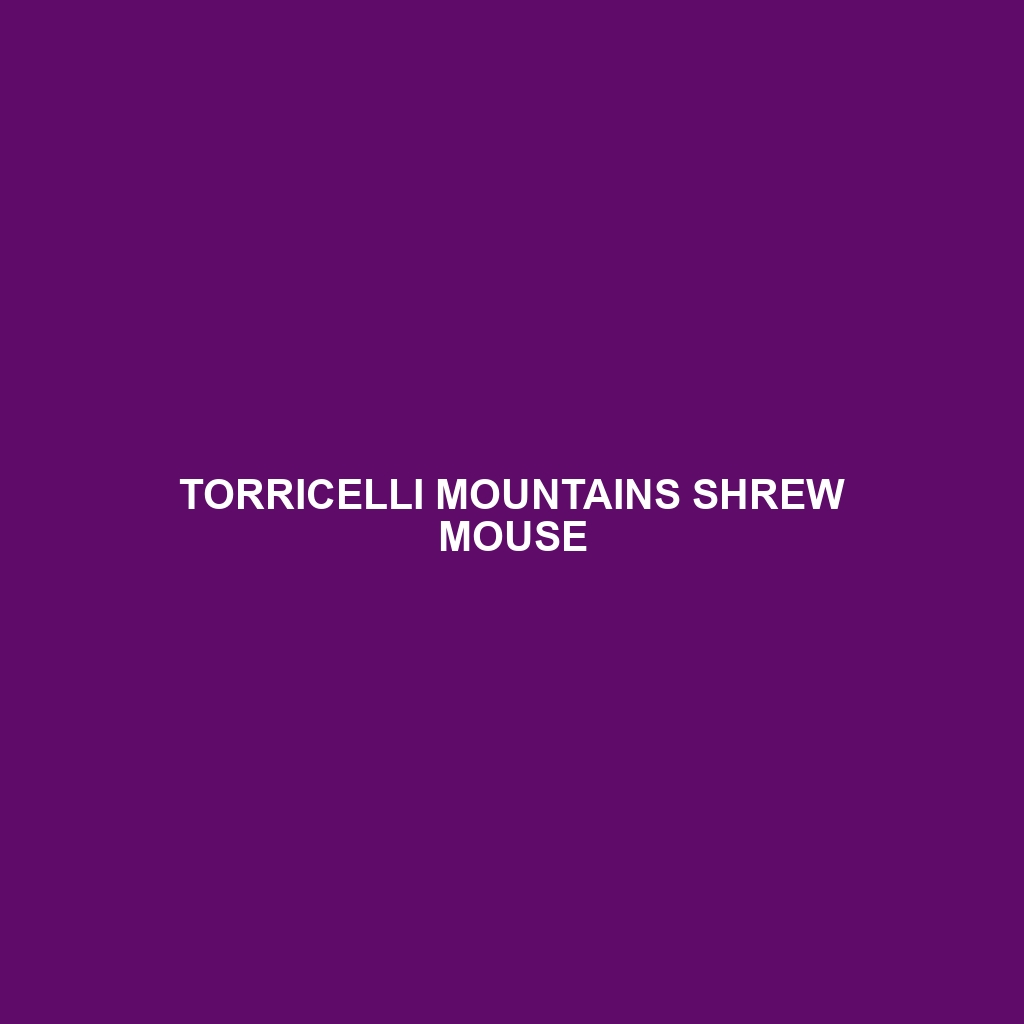Torricelli Mountains Shrew Mouse
Common Name: Torricelli Mountains Shrew Mouse
Scientific Name:
Habitat
The Torricelli Mountains Shrew Mouse is primarily found in the lush, biodiverse ecosystems of the Torricelli Mountains in Papua New Guinea. This delicate species inhabits humid montane forests, relying on high canopy cover and a temperate climate. They thrive in areas rich with leaf litter and dense undergrowth, which provide ideal conditions for shelter and foraging.
Physical Characteristics
Measuring approximately 10 to 12 centimeters in length, not including the tail, the Torricelli Mountains Shrew Mouse features a slender, elongated body. Its fur is a distinct dark brown, mottled with lighter patches that enhance its camouflage against the forest floor. Prominent whiskers and a pointed snout are notable, as well as large, expressive eyes that aid in its nocturnal lifestyle.
Behavior
This species is primarily nocturnal, exhibiting behaviors characterized by agility and curiosity. The Torricelli Mountains Shrew Mouse is known for its burrowing habits, often constructing complex tunnel systems within the leaf litter. It is an elusive creature that relies on its keen sense of smell to navigate its environment and locate food sources, making it a fascinating subject for wildlife enthusiasts and researchers alike.
Diet
The diet of the Torricelli Mountains Shrew Mouse consists mainly of insects, fruits, and seeds. They exhibit opportunistic feeding habits, foraging during the night to scavenge plant materials and small invertebrates. This diverse diet is crucial for their survival, allowing them to adapt to variations in food availability throughout different seasons.
Reproduction
The reproductive habits of the Torricelli Mountains Shrew Mouse typically peak during the wet season, which spans from December to March. Females are known to give birth to litters of 2 to 4 offspring after a gestation period of approximately 25 days. The young are altricial at birth and rely heavily on maternal care during their early stages of development.
Conservation Status
The current conservation status of the Torricelli Mountains Shrew Mouse is classified as vulnerable due to habitat loss from deforestation and climate change. Ongoing habitat destruction poses a significant threat to their population, necessitating urgent conservation efforts to protect their natural environment.
Interesting Facts
One fascinating fact about the Torricelli Mountains Shrew Mouse is its exceptional ability to glide short distances, which aids in maneuvering between trees in search of food and shelter. Additionally, its role in seed dispersal contributes to the health of its forest ecosystem.
Role in Ecosystem
The Torricelli Mountains Shrew Mouse plays a vital role in its ecosystem, acting as both prey and contributor to seed dispersal. By consuming various plant materials, it helps maintain the balance within its habitat, while also serving as a food source for larger predators. Its presence is a key indicator of ecological health in the montane forests of Papua New Guinea.
